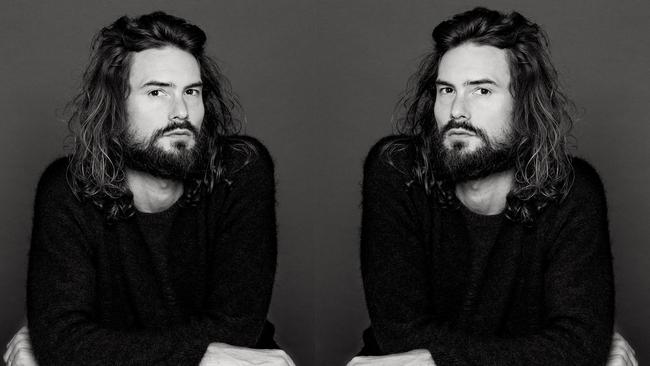Foray into fragrance paying off for Aussie skincare giant
The fragrance market is lucrative yet crowded. But with the help of Frenchman Barnabé Fillion, Aesop is finding a niche.

Barnabé Fillion doesn’t just have a powerful nose. He is a powerful nose.
The French perfume designer has developed scents for internationally-renowned fragrance and fashion houses like Le Labo, Paul Smith and sustainable London-based brand Von Sono. He’s a regular collaborator of South Korean-born, American-raised conceptual artist Anicka Yi, whose pungent practise lies at the intersection of fragrance, cuisine, and science, and who has held solo shows at New York’s Solomon R. Guggenheim Museum.
But recently, Fillion’s list of collaborators has tightened, and there’s one brand that continues to feature regularly on his long and impressive CV. That brand is Aesop, the skincare phenomneon that was born in a Melbourne hairdressing salon in 1987, and that now has retail outposts in global cities all over the world.
Fillion first worked with the brand in 2015, on the launch if its very first fragrance, Marrakech Intense. Rich and spicy, it evoked the sights, scents, colours and culture of Morocco, and it remains one of Aesop’s most popular fragrances today.
In between now and then, Fillion has collaborated with Aesop on its range of home fragrances, named Istros, Cythera and Olous respectively, as well as its Hwyl scent, which, reminiscent of a Hinoki forest, is billed as possessing a ‘hint of eccentricity.’
And now, Aesop and the French nose have returned with their most ambitious collaboration yet: a trio of Eau de Parfum titled Othertopias.

“There is a presence of this relationship between Man and Nature in each of the Othertopias perfumes,” says Fillion, from his home in Paris. “Sometimes the Man is fully imminent, such as with ‘Miraceti’, and sometimes it is nature that is more obviously present, in its never-ending resistance against the mineral city, which inspired ‘Erémia’.
“With ‘Karst’, the third fragrance, we were very inspired by the idea of the shore, being on top of a cliff and feeling the freedom in the pure smell of the air. The philosopher Nietzsche spoke a lot about how the best perfume, the best smell you can experience in your life, is the real smell of the air.”
Where Erémia contains crisp, zesty and green notes, Miraceti’s spicy top notes mingle with warm balsamic, wood and the faint must of a whisky-filled cellar. Karst is underpinned by briny yet herbaceous notes that are balanced by subtle smoky undertones.
Concocting an aroma
Fillion’s process is more cerebral than you might think. Interestingly, he doesn’t necessarily begin with a scent or a memory; with Othertopias, he actually began with a text.
“I was collaborating with a philosopher friend of mine, where we went through various texts — Gaston Bachelor for his spatial poetry; Herman Melville for writing Moby Dick and Alain Corbin for his words on the sea and territory of the shore.” And Nietzsche, of course.
“When considering the texts, we thought about geographical space, poetic space and abstract space,” explains Fillion. He says that from here, he was led to the idea of the perfumes being able to project us into a “poetic landscape”.
“The concept was poetic, conceptual, philosophical... it gives access to reality, but it’s slightly stronger than an experience because it’s perfume.
“It’s a little bit like the mental image that a reader has in their mind when reading poetry. In a way, literature transports, as does perfume.”
It’s from here that Fillion takes his ideas to Aesop, and the scientific part of the process — selecting notes, finding complimentary aromas, bottling them up and testing them on the skin — begins.
The Aesop effect
It’s a success story that skincare brand founders pin on their vision boards. Founded by hairdresser Dennis Paphitis in ’87 in Armadale, Melbourne, Aesop has since grown into one of the most globally recognisable, discerning and sworn-by skin, hair and body care brands. Open any interior design magazine, for example, and you’ll see one of the brand’s brown or black bottles, wrapped with its trademark pharmaceutical-chic labelling, intentionally poised on a bathroom vanity.
The brand has become a visual signifier of impeccable taste, especially insofar as it relates to personal hygiene and self-care.
Like any brand that’s found monumental success both on home soil and overseas — though at a sustainable rate, it must be said — recently, Aesop has found itself venturing into new product categories. Late last year it launched its debut collection of gently scented candles, and today its range also includes essential oils, designed objects (like a brass oil burner, designed in collaboration with Sydney multidisciplinary artist Henry Wilson), and even shampoo and conditioner for its customer’s four-legged friends.
But fragrance has become more of a focus for the brand in recent years, and it’s done incredibly well. The concoctions aren’t priced like a Tom Ford or Jean Patou scent; rather, they retail between the $150 and $220 mark, making them accessible but not pedestrian.
It’s all in the nose
Fillion has played no small part in this chapter of the brand’s success story. And with the launch of the three scents that make up Othertopias, which are now available to purchase through Aesop’s online and bricks-and-mortar stores, the presence of this chapter is set to proliferate.
“The approach with Othertopias [was] to build a recognisable landscape, and suddenly open the window to nature; the window to reverie; the window to memory; the window to abstraction,” says Fillion.
“Of all the fragrances I have created, these are some of the most complex I have ever made,” adds the nose, pointing out that these fragrances include a number of new and sophisticated ingredients not yet used in Aesop fragrances before.
“For example, in Miraceti, we used Red Seaweed, which is a CO2 extraction, so it is a very technical ingredient.”
“These are fragrances that reveal another view on the world, transporting wearers elsewhere to realms both real and imagined.” If there’s anything we could all do with right now, it’s a bit of this.


To join the conversation, please log in. Don't have an account? Register
Join the conversation, you are commenting as Logout